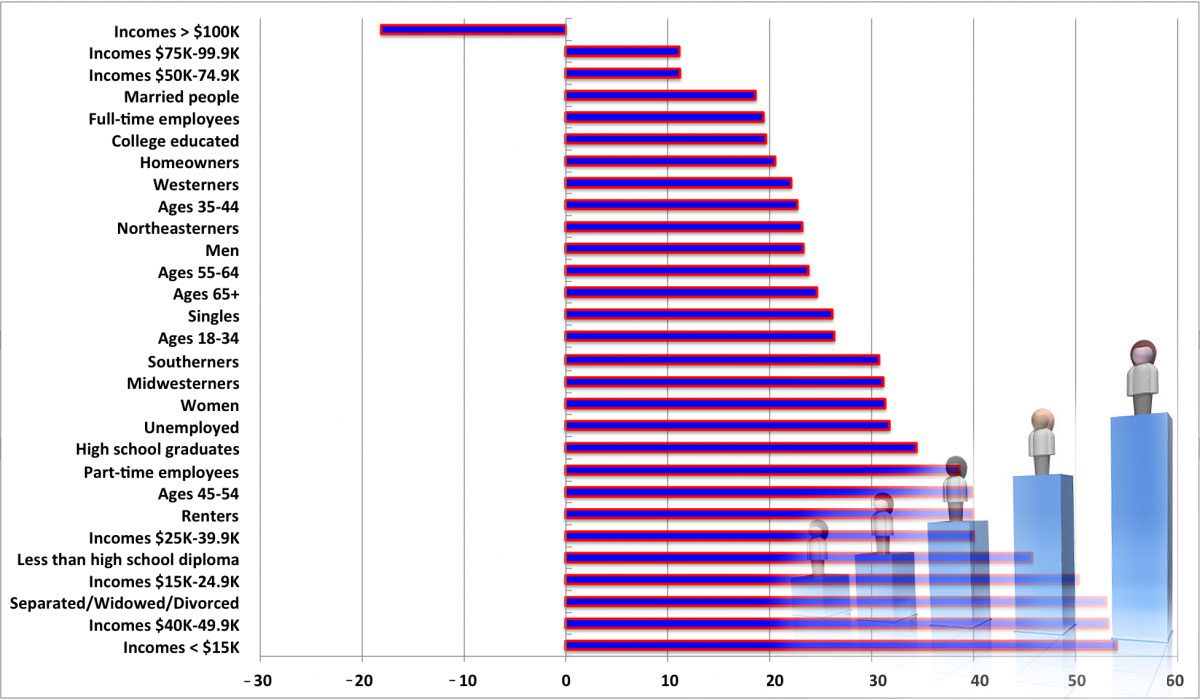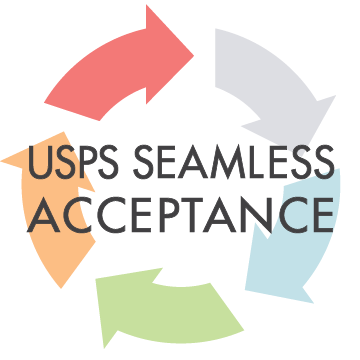Audience Segmentation: Tips for a Strong Digital Marketing Program

Audience Segmentation • Fine Tuned Listening • Automation
Like almost every marketer, you must make difficult decisions each day about how you will spend your limited time and resources. Because of that, you’ll want to be sure you’re making the most efficient use of the strategies and tools you will be employing. Many marketing articles will go on about specific tactics and how to maximize your approach to one key task. Improving calls to action to deliver the best possible offers by working closely with your business development associates is an excellent strategy to drive more revenue.
But sometimes, the advice can (and should) take a higher look at how to remake your entire marketing effort. One of the best ways to maximize your marketing resources is to focus on mastering three key strategies and then base your future success on delivering your best work in these areas. This tip sheet focuses on the critical “Big Three” of Listening, Audience Segmentation and Automation. And yes, you should think about them in that order – beginning with listening and ending with action. So let’s dive into 10 tips across these three key areas of digital marketing.
1. Expand the way you think about listening.
Many marketers do an excellent job of capturing prospect and customer behaviors in some areas, but either neglect others or do so only at an aggregate level. Make it a goal to listen more closely to individuals — and at scale. Look at the customer journey and think about all the ways contacts interact with you across channels – purchases, emails, mobile apps, social, Web behaviors, etc. Where could you do a better job of listening?
Listening is more important than ever for driving success in marketing these days – especially in various social channels. That might sound insane, but if you’re not dedicating a large portion of your effort to listening – you’re likely missing the point. Look at it this way: There’s so much more value in using social channels to engage and listen rather than just shout a sales pitch.
Identify some key behaviors which are most important to your business. If you don’t have a process in place for capturing and understanding these behaviors, that’s where you’ll want to focus your initial listening efforts.
2. Gather your data and get it in order.
One of the most valuable listening sources is your company website, so if you aren’t already tracking web visitors’ behaviors, you will want to work with IT to install the tracking code(s) necessary to do so. This tracking set-up will open a critical customer-level view of behaviors which should flow directly into your marketing automation platform to become elements you can query immediately. Also, having a fully coordinated identity schema across multiple systems and customer groups is a critical element of effective listening. If your company is in growth mode, take the time to put a Consumer ID project on your map for growth. Ensure all your touch points can identify your users, and begin to aggregate data in a central place like a CRM tool, for example. Once this is set up, you can take steps to build out technology integrations needed to pull data into your central location and tie it to individual users. This will give you a more comprehensive view of your contacts to build out models and profiles to whom to market effectively.
3. Pay close attention with your social listening.
Social networks are one of the best places to conduct market research and keep up with customer satisfaction. Just about every business has a steady stream of new products that, ideally, are driven by customer demand. What better place than a Facebook or Twitter search, for example, to plug in very specific keywords and immediately see what a few hundred million people think about a specific topic?
If you have not been already, try spending one day per month searching your brand and product names across all relevant social networks. See how and when people post about your products or brand, and go even further to see what people are saying about your competitors. Think through the types of customer dialogue your marketing is creating. Are others in your organization having two-way conversations? Are unanswered complaints common? In addition, look carefully at analytics tools, that will enable you to listen to specific demographics. Target specific elements of data into the core structure of your database and use them to further split test your highest-performing campaigns. Finally, take a closer look at what your top two or three competitors are doing with their social media. Analyze the full conversations behind their tweets originating from their main account. Do their customers complain about pricing or quality? Or are there countless customer conversations praising their support or customer centricity? Understanding the general social sentiment toward them is one of the best sets of data to have.
A Word on Segmentation:
Audience segmentation, the process of splitting your database into many smaller lists based on criteria such as purchases, email opens, or demographic elements, could mean the difference between hitting your revenue goals this quarter and missing them by a significant percentage. In a landscape where nearly every marketer has more work than they could possibly accomplish, segmentation can also help prioritize your workload. For example, it may help you spend more time marketing to your customers who purchase the highest quantities. Asking yourself smart questions in your segmentation thinking might also enable you to define new streams targeted toward your ‘most likely to convert’ customers. Done properly, segmentation will enable you to isolate and market to a very specific customer group or even on a one-to-one basis.

4. Audience segmentation first, message next.
With the growth of technology in marketing, a new challenge has emerged: to ensure the “art” and “science” of your marketing will coexist harmoniously. With this in mind, how can you best approach the question of segmentation (who’s will get the message) vs. creative execution (what’s the call-to-action in the message)? Any marketer can nowadays, instantly become more effective and behaviorally-driven by improving their thought process around audience selection. That’s why you should typically look first at audience segmentation when considering campaign efforts. Focusing on who receives your marketing and follow-up communications can change your entire approach. The great thing about applying science (your audience segmentation) before art (your message) is that you will nearly always reduce the size of your audience, but almost always increase the relevance (which will translate to revenue) driven from each campaign. Once you have thought through the target audience aspect of your message, you’ll be able to focus on developing some catching creative.
5. Identify models for key segments.
To best develop your segmentation efforts, become familiar with a rough implementation of five to seven segments across your customer base. If you have not yet considered segments, make it a priority to invest the time and resources into creating a top-line set of persona models. Begin with two or three and drill deeper over time. (IBM Marketing Cloud has a great tip sheet, “10 Tips for Developing Buyer Personas.” that can be downloaded from here.) Remember to always look for newly developing segments too. Grouping the audience segments differently can be an “ah-ha!” moment for marketing, and stacking those segments together can help to further drive revenue.
6. Think about the demographic AND the behavioral aspects.
Demographic data is an excellent place to begin your segmentation thinking. Splitting your database by gender, family size, location and email domain can be the basis for some solid content-sharpening exercises. You can also segment on key behaviors, such as opening an email, visiting a webpage, downloading a company mobile app, viewing a video and others. Combining both demographic and behavioral data and considering the full scope of what someone buys or does can provide critical insights to anyone who might act or buy similarly. Imagine you’re a shoe retailer with a contact who self-reports at opt-in as a female. You may initially send her emails focused on women’s shoe fashion, but if she continually views men’s items – maybe in an attempt to improve the wardrobe of a man in her life – you could then adjust her content accordingly. You would likely see a lift in her conversions, and you’d also be demonstrating that your marketing is paying attention at the individual level.
7. Quantify your audience segmentation strategies with scoring.
Today’s advanced marketing platforms enable you to build models for scoring that combine three key points; behavioral, demographic, and time. This will get a unique picture of a contact based on the parameters you choose. It is critical to recognize the importance of time in the equation while weighting demographics and behaviors based on how important they are to the end conversion. This weighting strategy can work to drive big gains for business. Those who were identified to a certain profile and performed several key behaviors within the last two days are likely in a different purchasing cycle phase than those who did so four months ago. Adjusting the recency of your scoring model can reflect this difference, and provide a more accurate portrait of each contact or set of contacts. Once your model is in place, you can use scoring to segment an entire group (send a specific offer to everyone with this score) or trigger one-to-one communications (send this offer when an individual crosses a scoring threshold).
Automation:
Once you’ve mastered your thinking on segmentation, the next logical question will be “How should I deal with all these tiny subgroups when I could hardly keep up with my main list?” The simple answer is: Your marketing will become more automated, and if done effectively, it will also become far more relevant to your specific audiences. Automation is what brings your segmentation to life and drives home that opportunity for increased revenue. When you strive to build longer, more involved relationships with your customers, calling for tactics beyond batch-and blast email, it will be evident in your revenue stream.
8. Identify the programs that will have the biggest impact.
There are possibly dozens of automated programs you could implement, so where shall you begin? Welcome campaigns, cart abandonment messages and shop or browse abandonment emails are generally wonderful points to begin with, however the answer will differ from company to company. You should first figure out your key drivers for success, evaluate the potential ROI paired against level of effort required, and then decide just where to begin. If you have mastered the basics, jump to the next level of relevance for each campaign. If you’re seeing results with cart abandonment follow-ups, for example, roll out more extensive shop and browse abandon campaigns in your high-value categories. If you do well acquiring transactions with “Birthday” offers, explore other marked dates like anniversary of sign-up, first-time-serviced or renewal of subscriptions. Your recipients’ actions are telling you exactly what works. Pay close attention and focus on increasing marketing where the success is spotted.
9. Avoid becoming too overwhelmed.
When you’re already time pressed, adding a brand new automated program to your mix can seem daunting. To help ease this, do a “crawl, walk, run” approach and remember that you need not build your whole infrastructure overnight. Set a pace that will challenge you but is also realistic. One of the best ways to do this is to hone smaller chunks – Go into execution mode on three items, planning mode on the next three, etc. – during a specified time period. The great thing about this “Next Six” method is that you only have to architect changes in small groups of three for support of a larger change initiative. If you tackle only three per quarter, you can remake your approach over the course of 12 to 18 months, which is very doable and reasonable.
10. Use your automation to close gaps.
One of the best effective ways to improve your customer experience is to map customer interactions. As part of the exercise – or a periodic follow-up if you’ve already completed it – examine customer movement across channels, looking for staying points, messaging gaps and other opportunities to help contacts progress and convert. Once you’ve completed this step, you can better map out automated, multi-touch programs. You will be able to hit some high-level points in a buyer’s movement and help the multichannel process close business, plus you will cultivate an improved customer experience. As part of this process, think a lot about the automated program logic within your programs, including the possibility of connecting across channels where it makes sense to do so. With increases in mobile engagement, for example, you might find a well-timed SMS or location-relevant push notification provides a better experience than your traditional communication methods.
In Conclusion:
When you can discover the ideal combination of events that will drive conversions for you, get right to work automating it, continue to fine tune over time, and enjoy the continued growth.


